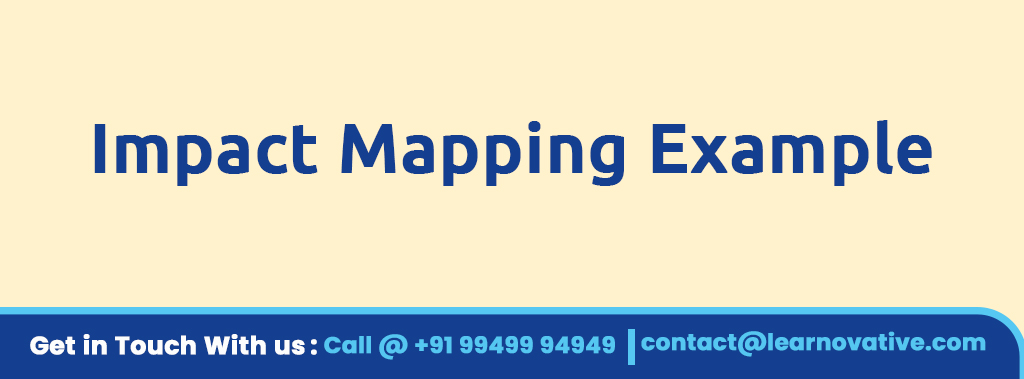
Introduction:
Impact mapping was introduced by Gojko Adzic in 2012 in his book “Impact Mapping”. Impact mapping is a graphic planning technique driven by business goals to decide which features to build into the Product. The impact map is structured around business objectives and intended people behavior that lead us to specific deliverables. These deliverables will be converted into Product Backlog Items (such as Features or User Stories). It can be created in a single brainstorming session and quickly developed into a product backlog.
Why is Impact Mapping Important?
Impact mapping helps product development teams maintain their focus on the primary business objective (goal) by mapping everything back to that goal. If a feature doesn’t come out of the impact mapping process, then it clearly means that the feature may not be required to be part of the Product.
It is also an effective tool to explain to the Developers and other stakeholders why a particular feature is being prioritized and compared to other features. Since impact mapping is simple and visual, it’s easy to understand and use.
Impact mapping is based on assumptions. It is assumed that a particular type of actor will make an impact on the goal. Therefore, additional validation must occur to confirm the use cases are valid and the prioritization is justified. But impact mapping is particularly good at ruling out certain features that don’t have a direct tie-in back to the agreed business goal.
Impact mapping can also play an early-stage role in exploring various ways to accomplish the business goal. By exploring all of the potential actors, impacts, and deliverables, product development teams can visualize the many different ways to get to their desired destination and then research and select paths with the greatest chance of success and value for the end users.
Structure of the Impact Mapping:

GOALS | WHO | HOW | WHAT |
Consists of the Business Goal to be achieved and why it is important. | These are the actors or Personas who are going to help to achieve the stated business goal. These are the people who are related to the Product | Here you will brainstorm to understand how each PErsonal can help you achieve the stated Business Goal and what is their intended behavior | This is the part where you come up with specific actions from your side that are helping your actors’ intended behavior. Deliverables may result in features, or user stories for implementation |
Example:
GOALS | WHO | HOW | WHAT |
Increase Revenue by 15% in the next year | Mike: Mike is a fashionista. He always buys things from the latest collection. She wants to keep up with all of the trends. She shops a lot, doesn’t bother much about the price, but wants to be sure that she will have everything needed for the new season right on time. Rob: Rob shops when he finds a good deal. He isn’t looking for trendy pieces. He has a few favorite brands and often buys their garments on sale. He is happy when he finds the best price and loves a good deal. | Mike: We want her to spend more time on our platform. The more she browses, the more trendy pieces she will see and eventually purchase. Rob: We want him to increase his average order value since he often buys in bulk on sales day. | Mike:
Dave:
|
So the final impact map looks as shown below:

Now that we have all deliverables listed on the map, everything we should do is prioritize them and assign stories (or Features if bigger) for each in the Product Backlog.
With this simple but effective technique you are able to quickly create an impact map that is transferred in a product backlog based on your business goals. Also this way you have a solid foundation that can be developed further, at a later stage of your product. If you want to learn more tools and techniques like Impact mapping, join our “CSPO online Training” and “Advanced CSPO Online Training” where you can learn useful Tools, practices and Techniques to become a successful Product Owner.
